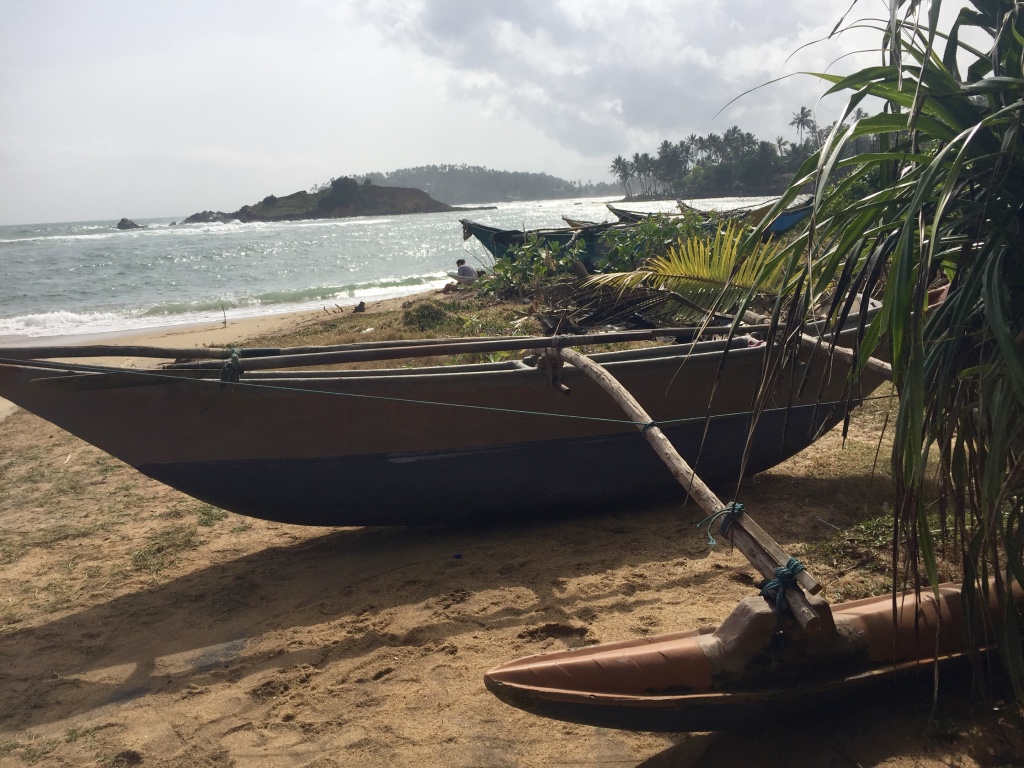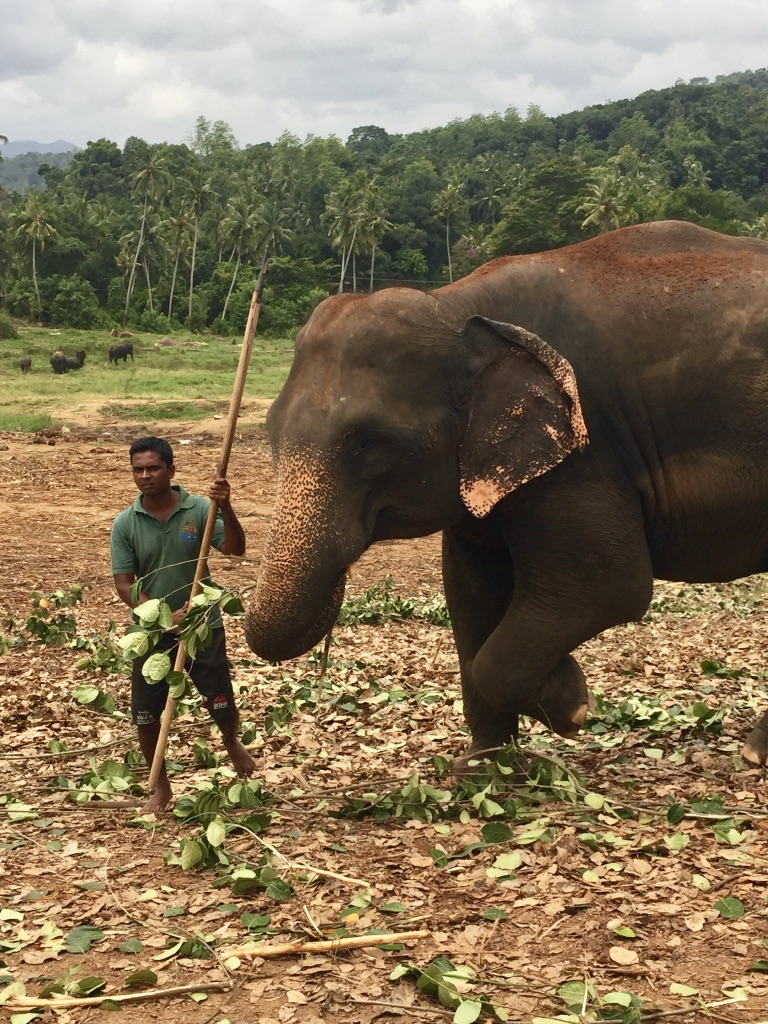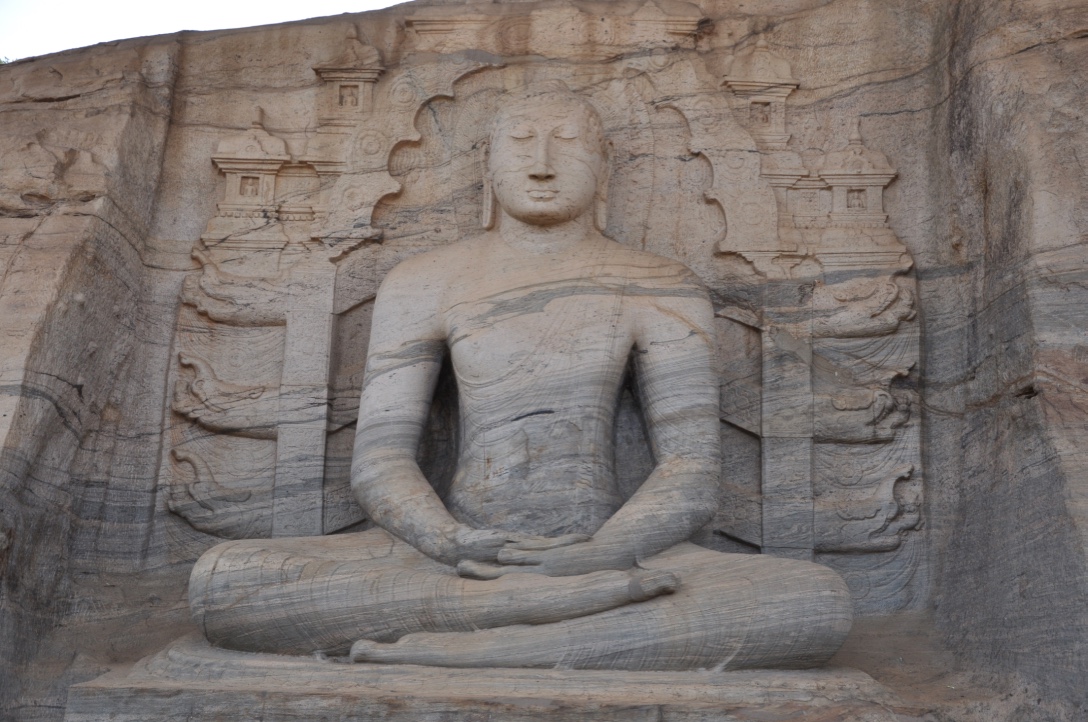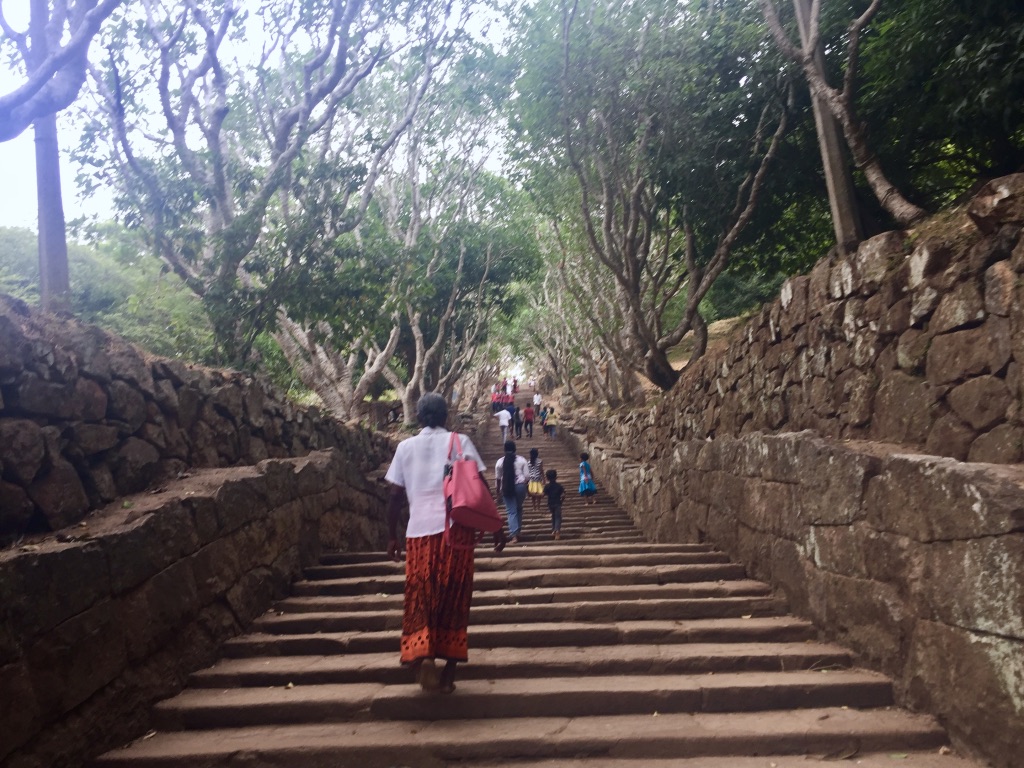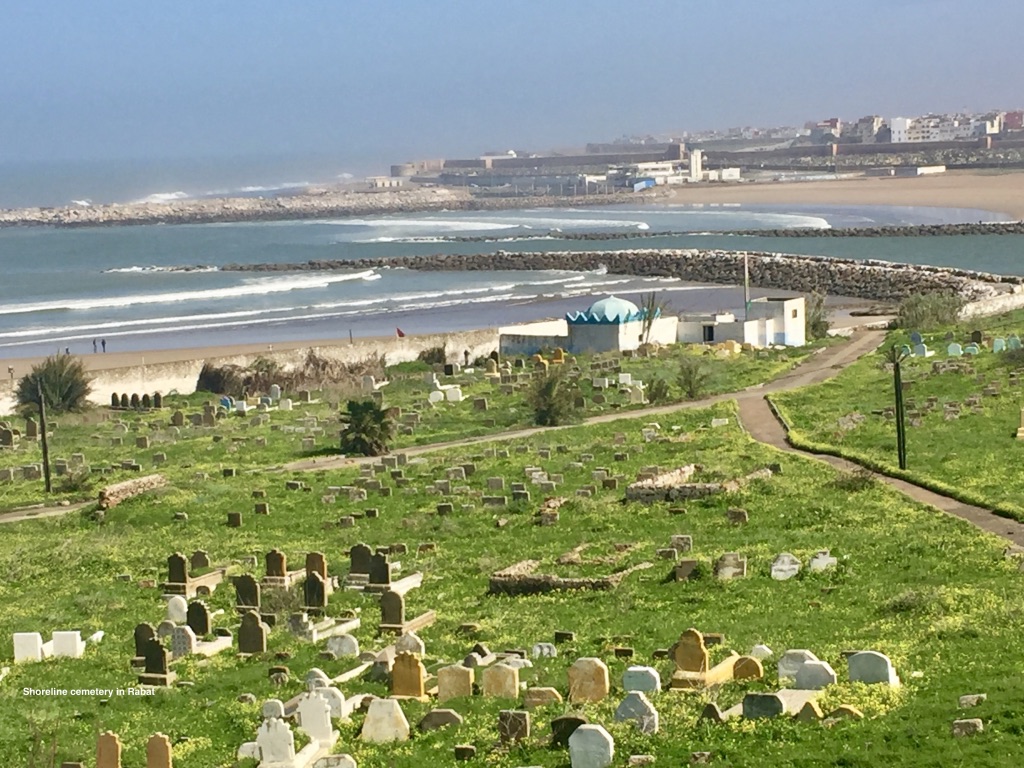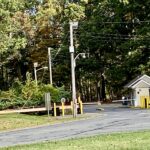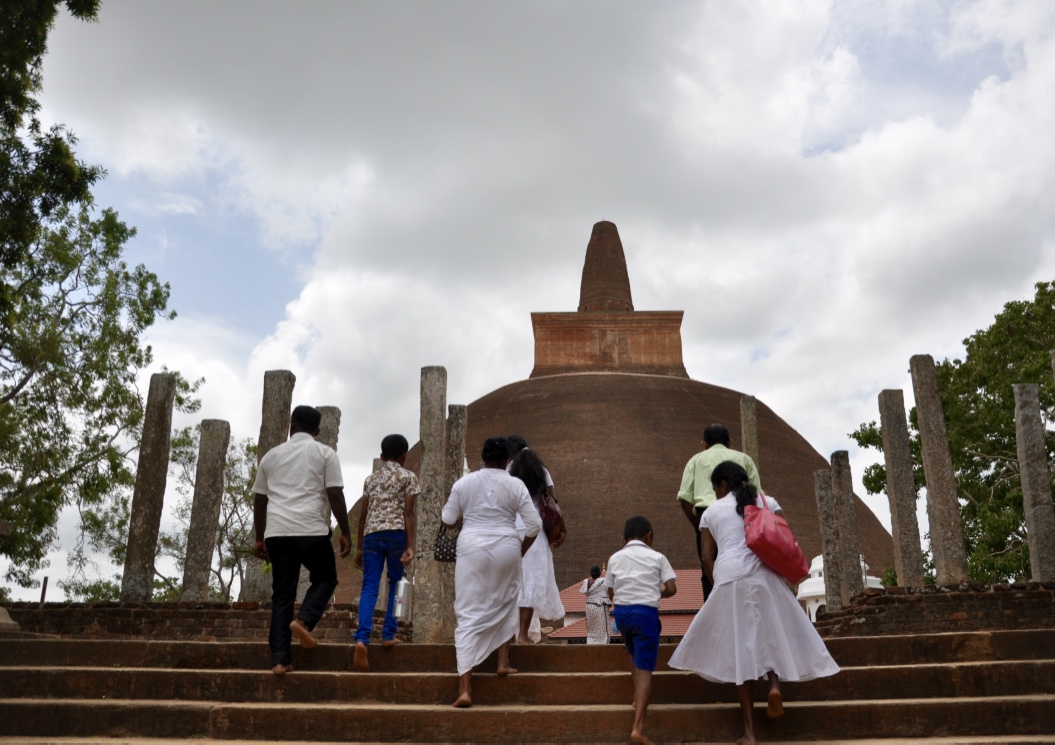 I would rather have taken off my shirt than my shoes when I first arrived in Sri Lanka. The July heat overwhelmed me. I thought I’d drop in the streets giving the flies a delightful morsel fresh from Chicago. At the time I visited, Sri Lanka was a country at peace and poised for tourism. Modern boutique hotels were my respite.
I would rather have taken off my shirt than my shoes when I first arrived in Sri Lanka. The July heat overwhelmed me. I thought I’d drop in the streets giving the flies a delightful morsel fresh from Chicago. At the time I visited, Sri Lanka was a country at peace and poised for tourism. Modern boutique hotels were my respite.
I quickly acclimated to the heat and began walking the paths, steps, hills, and shores of this island country barefoot. I followed local people in and beyond the country’s cultural triangle of Kandy, Polonnaurawa and Anuradhapura. In some instances bare feet indicated poverty and low social status. In other places it was a sign of respect and humility to spiritual traditions. Sri Lanka’s majority population is Buddhist but there are also Hindu, Muslim, Christian and indigenous Vedda communities.
For me, walking barefoot became more than honoring traditions. It grounded me in this far away place. The sensory experience surprised me. At first, I walked with hesitation. My shoe-bound soles were tender. The sanitary conditions were not what I was used to. Exposing my feet this way made me vulnerable. I thought something on the ground would pierce and infect my feet. Watching hundreds of Sri Lankans walking barefoot and never having a foot incident myself, I let go of my worry. I came to appreciate the natural gait my bare feet exposed.
Just south of India, Sri Lanka maintains a population of 22 million. Among its chants and songs are ancient ruins and modern restaurants that both confused and comforted me. Each morning I meditated outdoors, barefoot. In the western coastal city of Negombo, I sat in the hotel’s open-air rooftop lounge as an ocean breeze massaged my feet. On the beach at Mirissa, waves lapped at the sandy shore tickling my toes. When I jumped into the Indian Ocean I expected a chill, but the water was warm.
Members of the Vedda community subsist through hunting, farming and fishing. They practice the oldest known belief system, animism, which attributes spiritual qualities to plants, natural phenomenon and inanimate objects. They wear minimal clothing and no footwear. I encountered a Vedda man on the edge of a rice paddy path. My reaction to him was similar to one I had when a deer crossed my path in the Colorado Rockies, startled. The man stood in a shallow ditch where clear water covered his bare feet. We stared at each other for a few seconds. Bushy brows masked his eyes. Threaded bracelets circled his wrists. Centered on his chest was a smudge of gray hair. At his waist was a wrap of cloth. I smiled, but he remained still and silent. I continued on the path.
The mahouts at the Pinnewala Elephant Orphanage are barefoot. Twice a day they escort the elephants from the orphanage through the streets of the town to the Maha Oya (river). The elephants’ feet are huge in comparison to their handlers, yet their stride makes no noise. The spongy cushion at the bottom of elephant feet act as a kind of shock absorber squishing objects beneath them. Their toes are buried inside the flesh of their feet.
The ground toughened the soles of my feet. I found my sense of direction improved. Maybe feet have memory.
At Polonnaurawa, one of the three great kingdoms of the cultural triangle, I followed the path to what was left of the palace built during the reign of King Parakramabahu in the 12th century. A statue of the king stands among the ruins. The hat he wears makes him look more elfin than royal, at least to my western perception. His eyelids are shut and a mustache droops down his chin. I take him to be a scholar, holding what looks to be a manuscript. His hands beckon me to turn the page.
In the northern part of Polonnaurawa I tossed my shoes to the scattered pile near the entry to Gal Vihara, a rock temple shrine of Theravada Buddhism, Sri Lanka’s state religion. The path is made of crushed rock and sand. It is not like the public barefoot parks in Europe that have sprouted up in the last few decades. Those are touted as healthy, natural and fun for tourists. In Sri Lanka the paths offer a route to the country’s cultural history and sacred sites.
The three statues of Buddha at Gal Vihara snuck up on me because they are carved in a bunkered granite rock. The sitting Buddha’s ear lobes hang to his shoulders. Perhaps he was a good listener. Buddha referred to individuals as streams, not as he or she. The layers of rock striate his statue body like a river flowing through him.
The standing Buddha statue is raised on a lotus pedestal with a robe draped on his left side. His arms are crossed which seemed an unusual posture for one known to welcome everyone. Perhaps this posture is really a hug to his heart.
The Buddha at rest statue shows his head tucked on a cylinder-shaped pillow with one hand under his cheek and the other on his hip. His lips are curled. His eyes are closed and his feet bare.
I looked down at my orange-brown feet colored by the path. I am reminded of being seven years old outside a Shoppers World store with my mother and two younger brothers. A woman stopped me and said: “You can’t come in the store barefoot.” I looked to my mom in hope she would resist the woman, but she said to the lady: “Good, maybe she will start wearing her shoes now.” They left me outside. I sat alone between the horse and elephant on a miniature carousel near the door entrance. Shoes was something I came to accept. In Sri Lanka bare feet are accepted at the most revered places.
I followed more paths. At the ancient Vatadage monument the stone was so hot I tilted my feet up rocking from heel to toe, moving in short leaps toward each of the structure’s crushed openings that faced the four cardinal directions.
At Anuradhapura, Sri Lanka’s oldest city, I took off my shoes and followed a group of women dressed in saris. The path meandered through a wooded area interspersed with ruins that lead to the Samadhi Buddha statue. Devotees placed lotus flowers at the foot of the statue. I wished I could talk with them but pronouncing the multiple syllables of Sinhalese words was like trying to talk with marbles in my mouth.
At Ruwanweliseya in Anuradhapura I approached a grand stupa similar in scale to the Egyptian pyramids. On the plaza pilgrims dressed in white with feet bare responded vocally to the three protective sutras, a poetic form of spiritual engagement. I circled the grand mound-shaped stupa listening to the soothing recital, shuffling my feet on the plaza’s floor of stone.
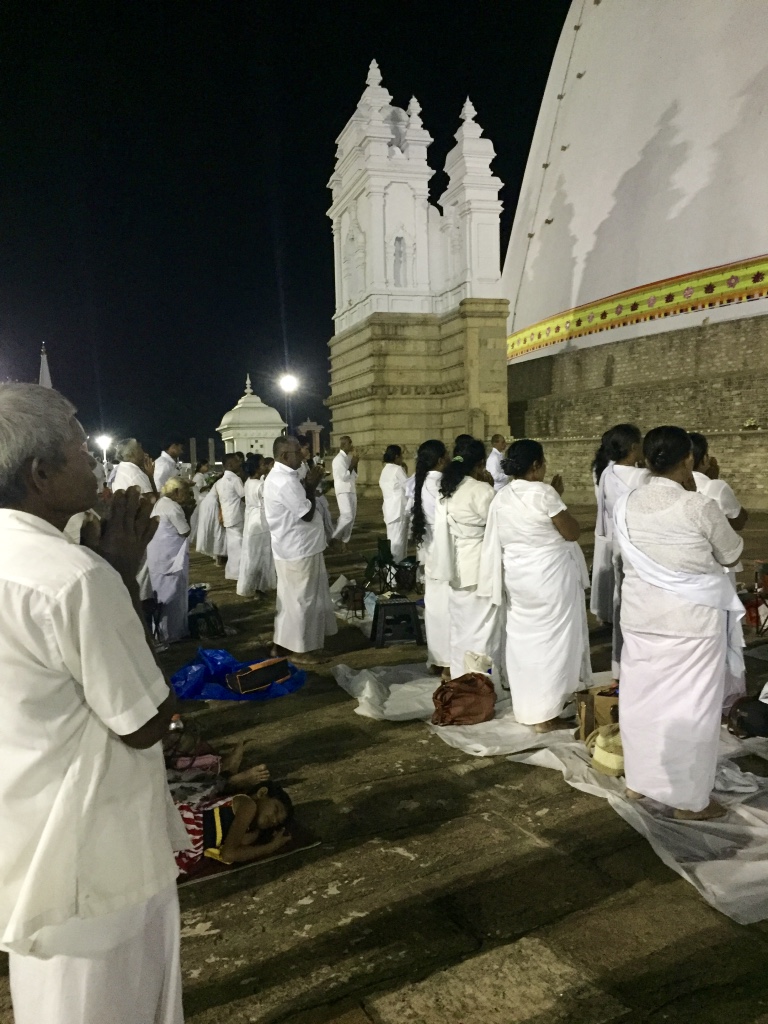 Architects describe pathways that lead to structures in one of three ways. A frontal pathway is straightforward leading directly to the entrance. An oblique pathway redirects, slowing the approach, allowing the visitor to meander and observe interesting elements along the way. A spiral path also prolongs the approach but emphasizes the structure’s three-dimensional form. This pathway guides the visitor around the structure’s perimeter, sometimes making it hard to find the entrance. A path is designed differently from a road because pedestrians don’t move as efficiently as automobiles. People on foot tend to turn around, stop, rest, and enjoy a sense of space around them.
Architects describe pathways that lead to structures in one of three ways. A frontal pathway is straightforward leading directly to the entrance. An oblique pathway redirects, slowing the approach, allowing the visitor to meander and observe interesting elements along the way. A spiral path also prolongs the approach but emphasizes the structure’s three-dimensional form. This pathway guides the visitor around the structure’s perimeter, sometimes making it hard to find the entrance. A path is designed differently from a road because pedestrians don’t move as efficiently as automobiles. People on foot tend to turn around, stop, rest, and enjoy a sense of space around them.
Steps are another matter. There are a lot of them leading to sites in Sri Lanka. Sigiriya in the Matala district is an isolated rock shelter mountain monastery where King Kasyapa built his palace in the late fifth century. Twelve hundred steps must be climbed before reaching the top. The wide path of steps narrows near the top. Beautiful frescoes and cave paintings keep one’s eyes from peering down. Resting platforms along the way assist the weary.
Walking the well-worn stone steps to Dambulla Cave Temple near Kandy required less effort. Monkeys hung in the trees on the ascent. The promise at the top was dozens of Buddha statues staring back in the dim rock cave.
The path leading to the Temple of the Sacred Tooth Relic in Kandy was crowded on Poya, a civic and Buddhist holiday celebrating the full moon. At the Temple all visitors must remove their shoes before entering. The smooth, cool marble floor was a relief from the burning sun.
In Sabaragamuwa Province, visitors and pilgrims climb more than five thousand steps to reach Adam’s Peak, a mountaintop said to contain the Sri Prada, a sacred footprint that to Buddhists is the footprint of Buddha. To the Hindus the footprint belongs to Lord Shiva. Christians and Muslims believe the footprint represents Adam marking his first step on Earth after being thrown out of the Garden of Eden.
It is said that when Buddha lived on earth, he offered a spiritual ‘path’ to follow. That’s a smart way of putting it because people like to turn around, stop, and rest while on a path. A Buddhist monk told me that faith was not enough to walk this path because one can lose faith. “Experience is the greatest teacher,” he said. Experience is a physical interaction, a sensory sensation. I can now think of no better way to experience a place than to set my feet bare on its ground.

